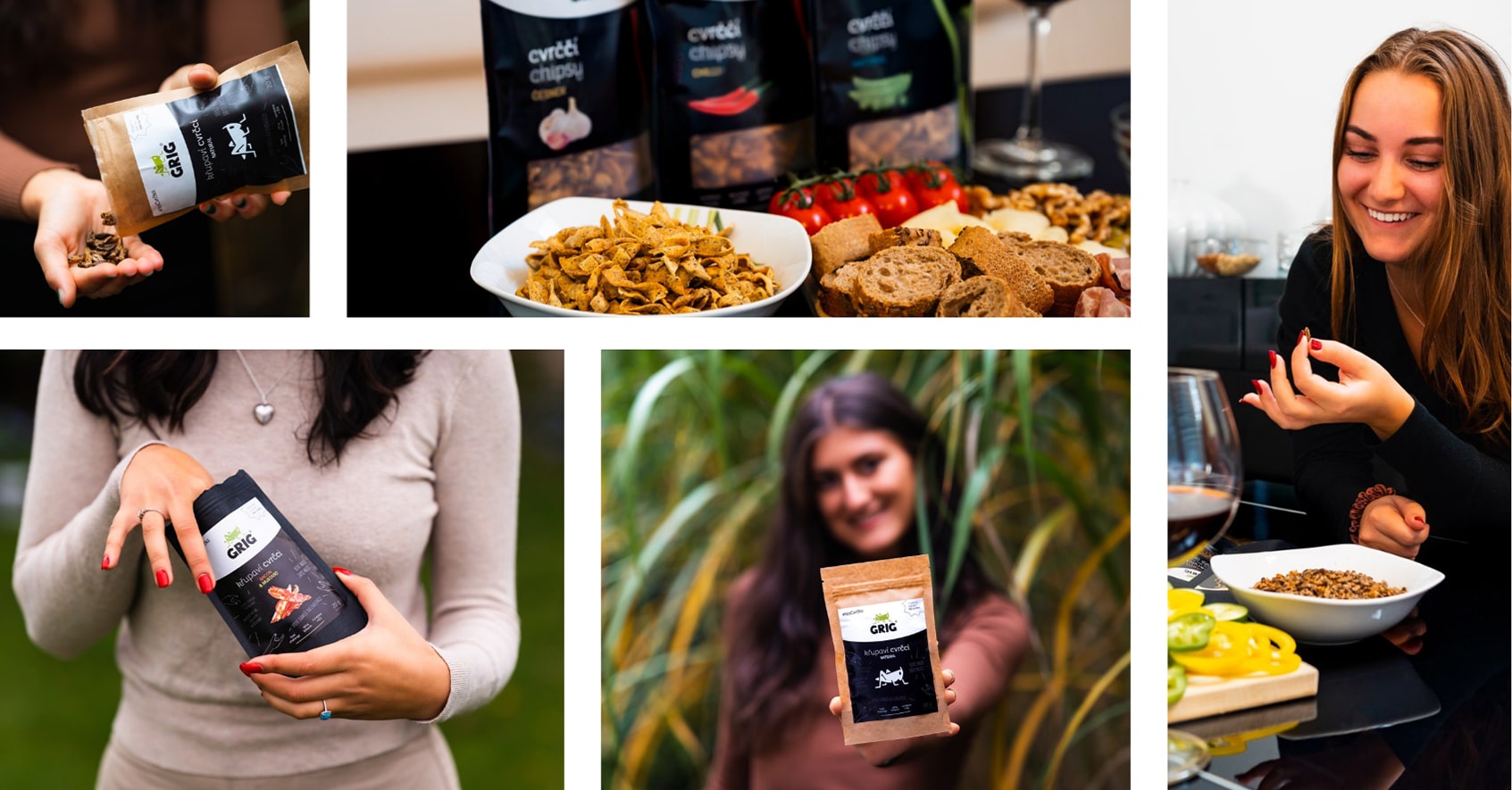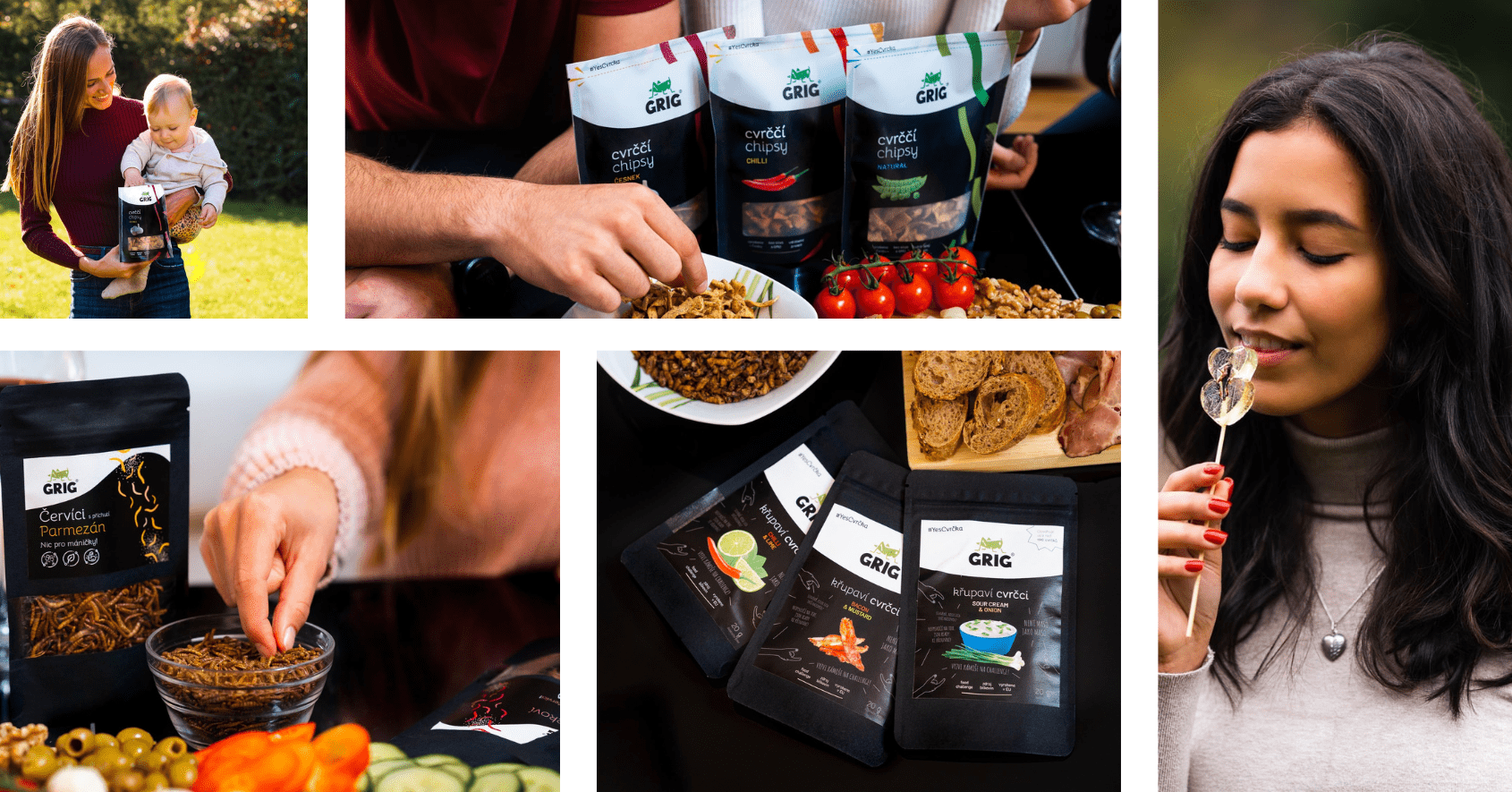



Product detailed description
A little bigger cricket
Whether you're an insect veteran or this is your first step into the world of edible insects, we're pretty sure you'll be pleasantly surprised by the Dried Grasshoppers in Sesame flavor. Grasshoppers are in fact one of the most interesting of insects and carry a subtle nutty flavour. This, combined with sesame seeds, creates the perfect combination of flavours.

Additional parameters
| Category: | Dried insects |
|---|---|
| EAN: | 8594207020340 |
| Allergens: | sesame. May contain traces of cereals containing gluten. Insect consumption (contains chitin) can cause allergic to molluscs, crustaceans and mites in people. |
| Manufacturer: | grig distribution s.r.o., Svatopluka Čecha 2672/100, Brno, 612 00 |
| Gluten -free: | yes |
Ingredients of dried locust Chilli:
Dried Locusta Migratoria 86%, sunflower oil, chilli 4%, salt. People allergic to crustaceans, molluscs and mites may be sensitive to insects (contains chitin). May contain cereals containing gluten.
Nutritional values per 100g
| Energy: | 2034 kJ / 487 kcal |
| Fat: | 28 g |
| - of which saturates | 7,4 g |
| Protein | 52 g |
| Carbohydrates | 0,4 g |
| - of which sugars | 0,0 g |
| Fibre | 10 g |
| Salt | 3,2 g |
Ingredients of dried grasshoppers Salt:
Dried migratory anemones (Locusta migratoria) 90%, sunflower oil, salt 3%.gr. May contain gluten-containing cereals.
Nutritional values per 100g
| Energy: | 2146 kJ / 513 kcal |
| Fat: | 30 g |
| - of which saturates | 7,7 g |
| Protein | 54 g |
| Carbohydrates | 0,5 g |
| - of which sugars | 0,0 g |
| Fibre | 10 g |
| Salt | 3,18 g |
Ingredients of dried grasshoppers Sesame:
Dried migratory anemones (Locusta Migratoria) 77 %, sunflower oil, sesame 14 %, salt 5,8 %, red wine vinegar, soy sauce 2,5 % cane sugar, chilli. People allergic to crustaceans, molluscs and mites may be sensitive to insects (contains chitin). May contain gluten-containing cereals.
Nutritional values per 100g
| Energy: | 1924 kJ / 460 kcal |
| Fat: | 26 g |
| - of which saturates | 7,2 g |
| Protein | 49 g |
| Carbohydrates | 1,8 g |
| - of which sugars | 0,0 g |
| Fibre | 9 g |
| Salt | 5,9 g |
Why edible insects?
Insects are becoming more and more common in the modern world for human consumption and it was only a matter of time before this trend reached us. Although eating insects is still quite taboo for most Europeans, there is no reason for this at all. There are a whole host of benefits hidden in eating insects, both nutritional, ecological and gustatory.
A NUTRITIOUS ALTERNATIVE FULL OF PROTEIN
Insects are a wholesome source of protein - up to 70% of it - as well as a wide range of micronutrients. It boasts, for example, all 10 essential amino acids, vitamins (e.g. of the B group), prebiotics and many other substances crucial for the proper functioning of our bodies. Not just any food can boast this!
MORE EFFICIENT PRODUCTION
To get the same amount of protein, insects need only a fraction of the water and feed compared to cows, pigs and other traditional farm animals. Plus, we can raise them in virtually any environment.
SAVES THE ENVIRONMENT
Raising traditional livestock can produce more emissions than all the cars in the world. In contrast, insect farming is a much greener and more efficient way to produce high-quality, nutritious food full of protein. Especially in this day and age, when every environmental improvement counts...
SPACE-SAVING FARMING
It's hard to believe, but up to 70% of all the world's agricultural land is taken up by livestock farming. This cannot happen with insects, because of their size and the way they are raised. Insects are simply a much more economical alternative. Let's use the remaining space more efficiently!
Why should we eat insects?
For all intents and purposes, insects are proving to be a great alternative to traditional sources of nutrients. It is full of protein, iron, calcium and is very environmentally friendly. Moreover, if prepared with care, it is an excellent way to spice up your daily diet.
What does edible insects taste like?
You will not be able to tell the insect content in the products themselves, as it is a raw material with a bland taste and is therefore covered with spices. However, if you decide to try the insects in their purely dried form, their taste can be compared to that of nuts.
How is the edible insect prepared?
There are a number of ways in which to prepare the insects. For our products, we use it mainly in the form of powders, which provide the products with the necessary proteins and other minerals. However, insects can also be consumed in their direct form, for example, after preparation in a pan or in the oven. However, for this method, we recommend taking inspiration from proven recipes.

Can edible insects cause allergies?
Insects contain large amounts of chitin, an ingredient often found in shellfish. Therefore, we warn our customers allergic to shellfish about a possible allergic reaction to insects.
How are edible insects killed?
The killing of insects is carried out in a completely humane manner. Not only is it a very simple species, but it also has a closed nervous system, so it does not feel pain. The killing itself is carried out by refrigeration, when the insect, as a cold-blooded animal, naturally goes into hibernation and is subsequently frozen.
Are edible insects vegetarian/vegan?
As it is an animal, it cannot be entirely claimed to be a product for these categories, but its low husbandry requirements and virtually zero environmental impact make insects a great way to obtain nutrients.

